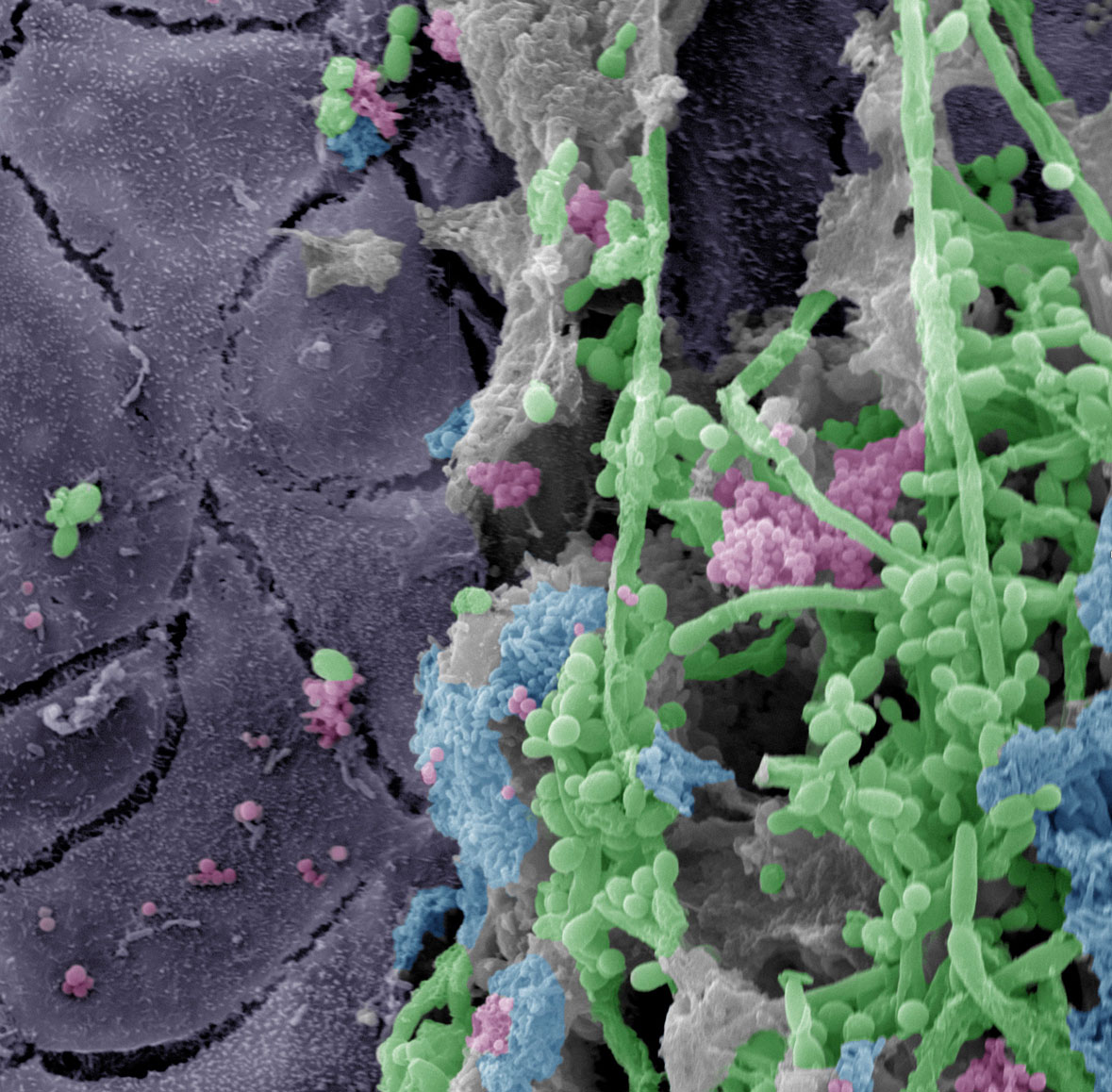Tuesday, 21 November 2023
Scientists have engineered a living material resembling human phlegm, which will help them to better understand how a certain kind of infection develops on the lungs of patients with cystic fibrosis.
The study, published in Matter, was led by Dr Yuanhao Wu and is a collaboration between Professor Alvaro Mata in the School of Pharmacy and Department of Chemical Engineering and Professor Miguel Cámara from the National Biofilms Innovation Centre in the School of Life Sciences at the University of Nottingham.
Biofilms are strong living 3D materials that play key roles in nature, but also cause major problems in the real world, such as in the contamination of hospital surfaces, or in our tolerance to antibiotic treatment.
One of the biggest challenges in antimicrobial discovery is the lack of biofilm models which reflect the complexity of natural environments, such as those encountered in the lung of cystic fibrosis (CF) patients.
Due to a genetic alteration, these patients are unable to clear infections in their lungs where complex communities of disease-causing microbes accumulate within thick mucus forming 3D biofilms. These natural biofilms are highly resilient to antibiotics and there is a critical need to develop in vitro models which can reliably reproduce them in the lab, so that experts can better understand their biology and develop solutions to the problems they cause.
This will enable a more consistent evaluation of novel therapeutic interventions before being taking into pre-clinical studies. These models will also be key to answering fundamental research questions on the interactions polymicrobial biofilms and their host which lead to chronic infections.
 A close-up of a model of cystic fibrosis (i.e., infected lung epithelial tissue) showing three types of bacterial communities including Staphylococcus (pink), Candida Albicans (green), and Pseudomonas Aeruginosa (blue) growing as a biofilm over epithelial cells.
A close-up of a model of cystic fibrosis (i.e., infected lung epithelial tissue) showing three types of bacterial communities including Staphylococcus (pink), Candida Albicans (green), and Pseudomonas Aeruginosa (blue) growing as a biofilm over epithelial cells.
In this study, experts engineered a living material resembling natural sputum, or phlegm, from CF patients that can grow 3D polymicrobial biofilms in a controlled manner, resembling those found in the CF lung. The team were able to achieve this by combining peptides with a culture medium that is known to recreate natural sputum and which can be easily infected.
The living material incorporates multiple microbial communities and key nutritional and chemical factors that promote bacterial growth and exhibit physical properties mimicking those of biofilms from CF sputum. The material has been used to build an infected in vitro lung epithelial model that was used to study the impact of antibiotics.
Professor Mata says: “The capacity to create complex 3D biofilms in the lab in a simple manner, will lead to practical tools to better understand how these living structures form and how to treat them better.”
Professor Cámara says: “The technology developed in this study will revolutionise the way we study biofilm-mediated infections and assess the effectiveness of novel antimicrobials using different in vivo-like infection environments.”
The work has been supported by the National Biofilms Innovation Centre and the European Research Council proof-of-concept grant NOVACHIP.
The full study can be found here.
Story credits
More information is available from Professor Miguel Cámara from the School of Life Sciences University of Nottingham at miguel.camara@nottingham.ac.uk
Notes to editors:
About the University of Nottingham
Ranked 97 in the world and 17th in the UK by the QS World University Rankings, the University of Nottingham is a founding member of Russell Group of research-intensive universities. Studying at the University of Nottingham is a life-changing experience, and we pride ourselves on unlocking the potential of our students. We have a pioneering spirit, expressed in the vision of our founder Sir Jesse Boot, which has seen us lead the way in establishing campuses in China and Malaysia - part of a globally connected network of education, research and industrial engagement.
Nottingham was crowned Sports University of the Year by The Times and Sunday Times Good University Guide 2024 – the third time it has been given the honour since 2018 – and by the Daily Mail University Guide 2024.
The university is among the best universities in the UK for the strength of our research, positioned seventh for research power in the UK according to REF 2021. The birthplace of discoveries such as MRI and ibuprofen, our innovations transform lives and tackle global problems such as sustainable food supplies, ending modern slavery, developing greener transport, and reducing reliance on fossil fuels.
The university is a major employer and industry partner - locally and globally - and our graduates are the third most targeted by the UK's top employers, according to The Graduate Market in 2024 report by High Fliers Research.
We lead the Universities for Nottingham initiative, in partnership with Nottingham Trent University, a pioneering collaboration between the city’s two world-class institutions to improve levels of prosperity, opportunity, sustainability, health and wellbeing for residents in the city and region we are proud to call home.
More news…